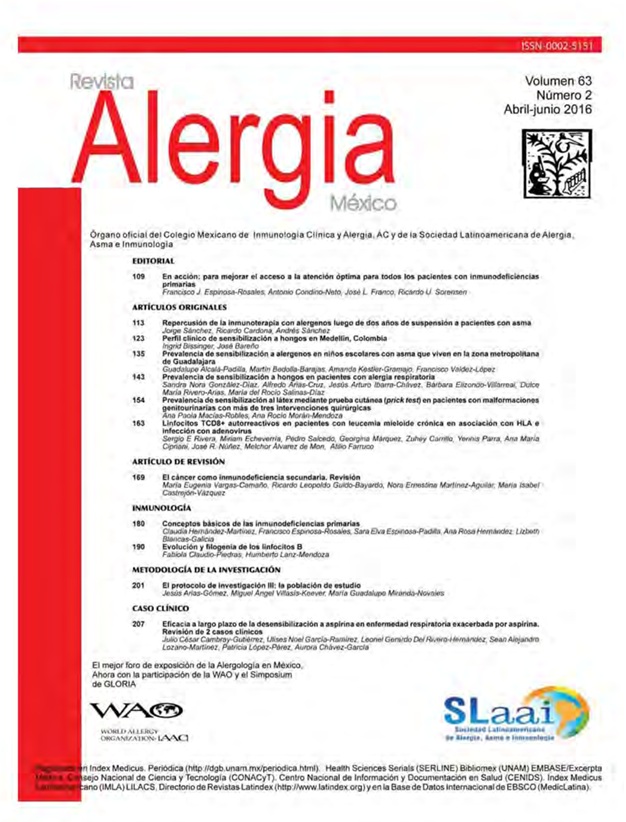Abstract
Background: A possible interaction between a specific HLA type and Adenovirus has been postulated as a promoter in leukemia clonal evolution. The HLA-DRB1*14, specifically DRB1*14:21, 14:22, 14:45, 14:26, 14:33, 14:51, 14:35 subtypes was the most frequent in CML venezuelan patients.
Objectives: It is interesting to evaluate the molecular mimicry between the Adenovirus and the DRB1*14 subtypes which exhibit the same change in the amino acid position of the DR53 epitope. This mimicked segment has been identified as a LLERRRA polypeptide.
Material and methods: Experimental research conducted in the IHO Venezuela, in peripheral blood samples of patients with ALL, CML and healthy controls. Mixed culture, serology, lymphocyte proliferation and cytofluorometry were performed.
Results: DRB1*14 patient’s lymphocytes reacted in 48 hours mixed culture against DRB1*14 promoters lymphocytes exhibiting increased CD8+T lymphocytes. CML patients show a different serological profile against Adenovirus. Only CML patients reacted to LLERRRA peptide, increasing CD8+ T cells.
Conclusion: It is established that the relationship CML, HLA-DRB1*14, autoreactive CD8+ T memory cell and CD8+T specific response from Adenovirus could be at the origin of the CML in venezuelan.
References
Smith KA, Griffin JD. Following the cytokine Signaling pathway to leukemogenesis: a chronology J Clin Invest. 2008 Nov;118(11):3564-73.
Perrotti O, Jamieson C, Goloman J, Skorski T. Chronic myeloid leukemia: mechanisms of blastic transformation J Clin Invest. 2010; 120(7):2254-64.
Yasukawa M, Ohminami H, Kojima K, Inokuchi K, Nishimura Y, Fujita S. Analysis of HLA-DRB1 alleles in Japanese patients with chronic myelogenous leukemia. Am J Hematol. 2000; 63(2):99-101.
Rivera S,Echeverria M, Marquez G, Villalobos C.C, Pereira N, DE Salvo L, Carrillo Z, Parra Y. Asociación HLA-DR*/ DQ*/DPA1* con leucemias linfoides agudas (LLA) y leucemias mieloides crónicas (LMC) en la población mestiza del estado Zulia, Venezuela (Estudio Preliminar). Ciencia 2007;15(4):365-372.
Dorak M. Frequently asked questions about HLA-DR53 and LEUKEMIA HLA-related LINKS SNP analysis of HLA-DRB4 entrez-gene: HLA-DRB4 dbSNP: HLA-DRB4Uni Gene- HLADRB4: Hs.696211 protein database: HLA-DRB4. Blog Last updated on 25 February 2008. Address for bookmark: http://www.dprak.info/hla/hla-dr53.html
Schlehofer B, Blettner M, Geletneky K. Sero-epidemiological analysis of the risk of virus infections for childhood leukemia. Int J Cancer. 1996;65:584-590.
Matsuoka M, HattorI T, Nishimura Y, Takatsuki K. ATL cells recognize self class II HLA antigens: Implication to leukemogenesis. Leukemia 1995;8:1338-43.
Yasukawa M, Ohminami H, Kojima K, Hato T, Hasegawa A, Takahashi T, Hirai H, Fujita S. HLA class II-restred antigen presentation of endogenus bcr-abl fusión protein by chronic myelogenus leukemia-derived dendritic cells to CD4+ T lymphocytes. Blood 2001;98(5):1498-1505.
Mundhada S, Luthra R, Cano P. Association of HLA Class I and Class II genes with bcr-abl transcripts in leukemia patients with t (9; 22) (q34; q11) BMC Cancer 2004;4:25. This article is available from: http://www.biom~dcentral. com/:1471-2407/4/25. 10. Hunt K, Vorburgers S, Suisher S. Ed. 2007 Humana Press Inc. Gene Therapy for Cance

This work is licensed under a Creative Commons Attribution-NonCommercial 4.0 International License.
Copyright (c) 2016 Revista Alergia México

